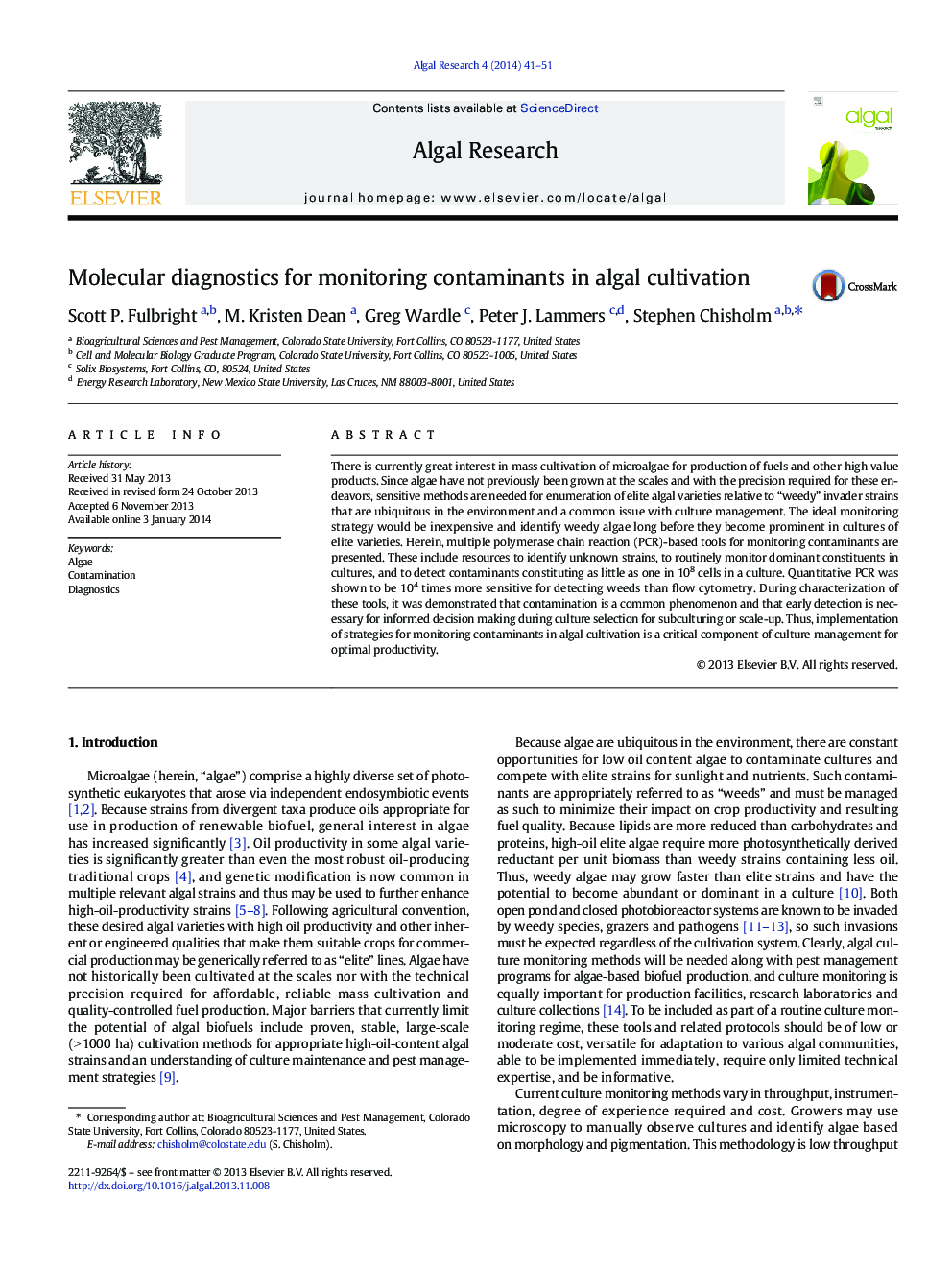| Article ID | Journal | Published Year | Pages | File Type |
|---|---|---|---|---|
| 8088453 | Algal Research | 2014 | 11 Pages |
Abstract
There is currently great interest in mass cultivation of microalgae for production of fuels and other high value products. Since algae have not previously been grown at the scales and with the precision required for these endeavors, sensitive methods are needed for enumeration of elite algal varieties relative to “weedy” invader strains that are ubiquitous in the environment and a common issue with culture management. The ideal monitoring strategy would be inexpensive and identify weedy algae long before they become prominent in cultures of elite varieties. Herein, multiple polymerase chain reaction (PCR)-based tools for monitoring contaminants are presented. These include resources to identify unknown strains, to routinely monitor dominant constituents in cultures, and to detect contaminants constituting as little as one in 108 cells in a culture. Quantitative PCR was shown to be 104 times more sensitive for detecting weeds than flow cytometry. During characterization of these tools, it was demonstrated that contamination is a common phenomenon and that early detection is necessary for informed decision making during culture selection for subculturing or scale-up. Thus, implementation of strategies for monitoring contaminants in algal cultivation is a critical component of culture management for optimal productivity.
Keywords
Related Topics
Physical Sciences and Engineering
Energy
Renewable Energy, Sustainability and the Environment
Authors
Scott P. Fulbright, M. Kristen Dean, Greg Wardle, Peter J. Lammers, Stephen Chisholm,
